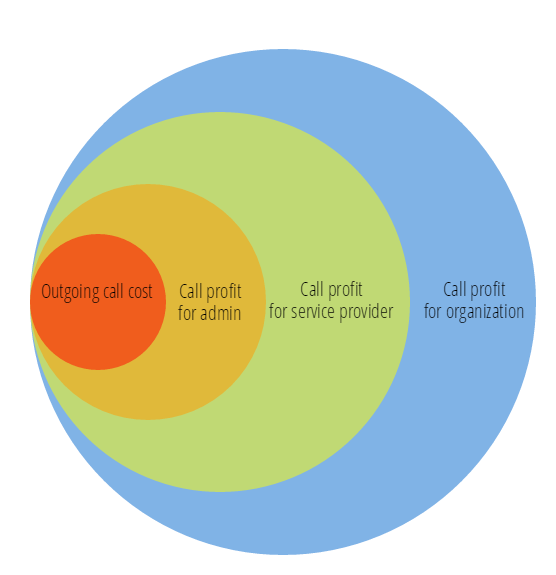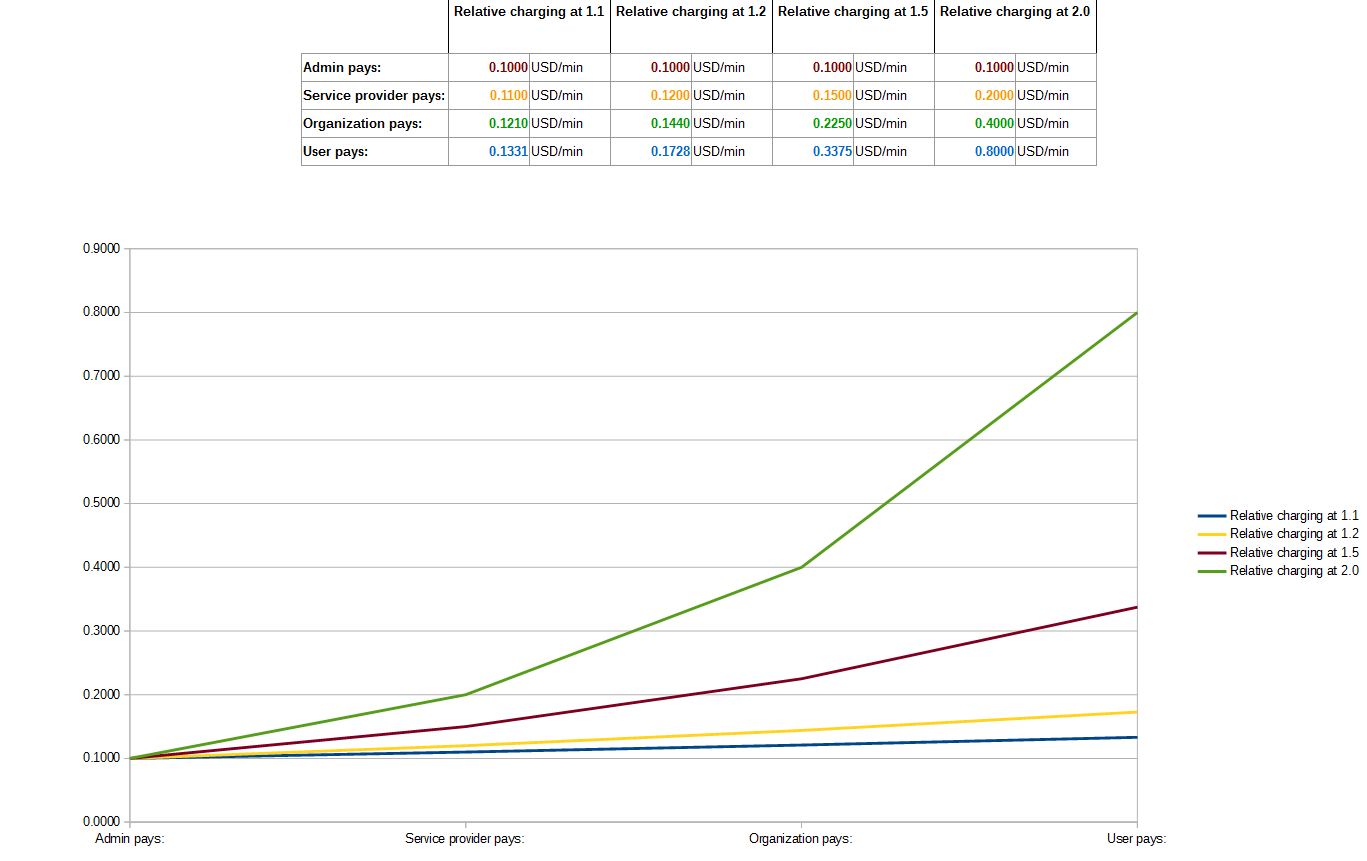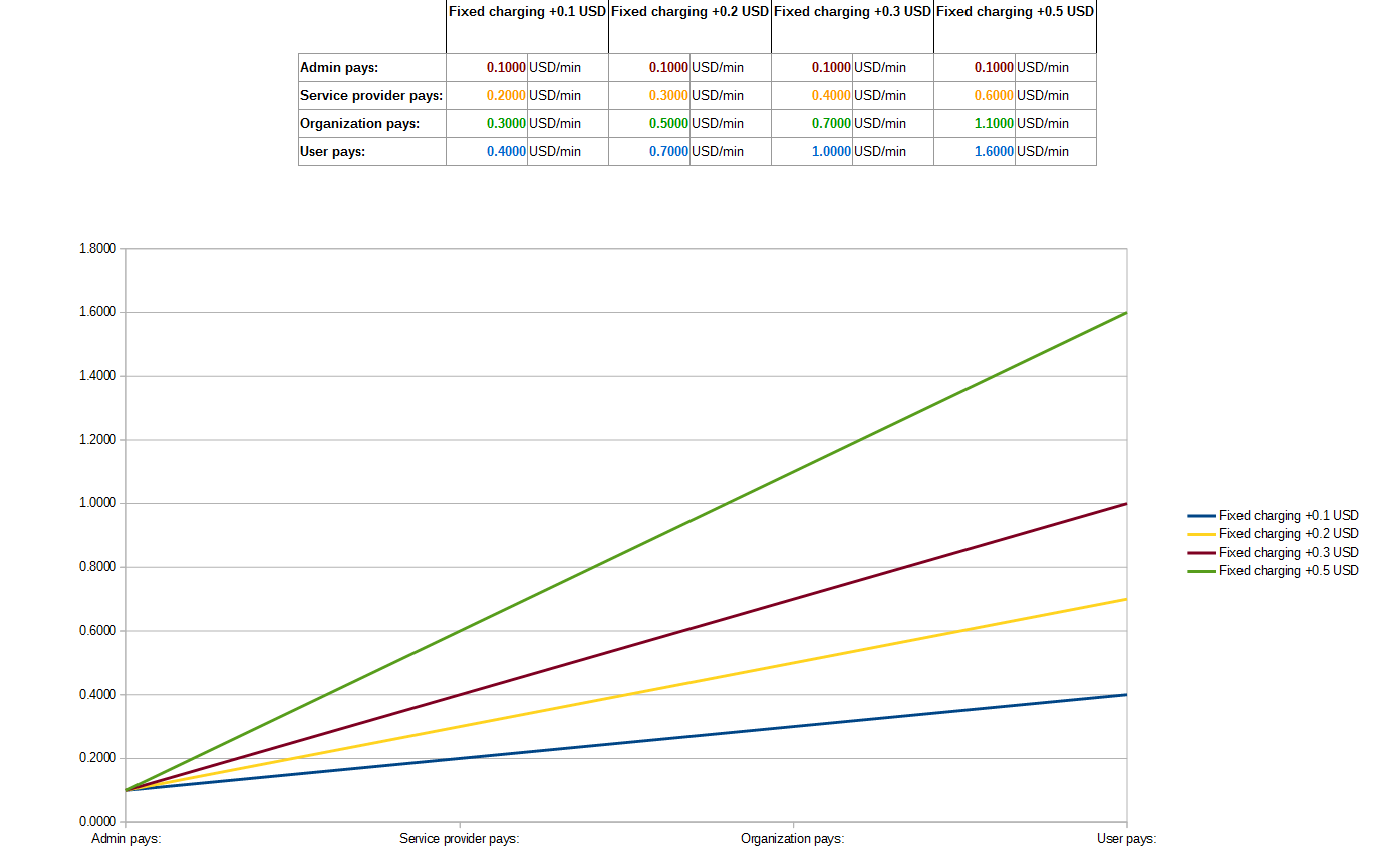Here's a visual guide to help you better understand the charging flow in VoipNow.
| Table of Contents | ||
|---|---|---|
|
Charging levels
VoipNow comes with 4 charging levels: Administrator, Service Provider, Organizations and Users. Each level is charged by the upper entity:
- The Administrator is charged by the SIP channel provider
- The Service provider is charged by the Administrator
- The organization is charged by the Service Provider
- The Users are charged by Organizations.
Charging in VoipNow is based upon the idea of each level adding its own profit margin to the call cost.
Charging per level
Charging starts with the channel call costs: the administrator has to pay the SIP channel provider for terminating calls sent from VoipNow to the channel provider.
In order to make a profit, the administrator will add an amount of money on top of the channel call cost and charge the total cost for that call to the service provider. The admin's call profit is in the orange area.
The total admin cost (channel call cost in red together with the admin profit in orange) is charged to the service provider.
Then it's the service provider's turn to add his profit to the call cost, as paid to the admin - this is the green area. The total (call cost in red, admin call profit in orange and service provider profit in green) will be charged to the organization.
The organization adds its own profit (in blue) to the call cost - the final amount is what the user will pay to the organization for his calls.
To sum up: call cost paid by an user = outgoing call cost + admin call profit + service provider call profit + organization call profit.
Examples
For relative charging
To make it easier to understand, we will assume that all examples refer to the same dialed number and the same profit margins for relative call charging. This is how much each level will pay for the same call in relative charging setups, if each level uses the given coefficient for relative charging (i.e. admin charges 1.1*channel call cost, service provider charges 1.1*admin call cost, organization charges 1.1*service provider call cost):
A simple formula can be given for relative call charging:
| Code Block |
|---|
Cc = channel call cost Cl = call duration Ra = administrator relative charging coefficient Rs = service provider relative charging coefficient Ro = organization relative charging coefficient |
| Who | Pays | Is paid | |
|---|---|---|---|
| Administrator | Cc*Clto the SIP channel provider | Cc*Ra*Clby the service provider | |
| Service provider | Cc*Ra*Clto the administrator | Cc*Ra*Rs*Clby the organization | |
| Organization | Cc*Ra*Rs*Clto the service provider | Cc*Ra*Rs*Ro*Clby the user | |
| User | Cc*Ra*Rs*Ro*Clto the organization |
For a 10 minutes call with a channel cost of 0.1 USD and a global 1.1 relative charging coefficient, the user will pay Uc = (((0.1 * 1.1) * 1.1) * 1.1) * 10 = 1.3310 USD.
For fixed charging
This is how much each level will pay for the same call in fixed charging setups, assuming each level adds the same fixed amount to the call cost:


